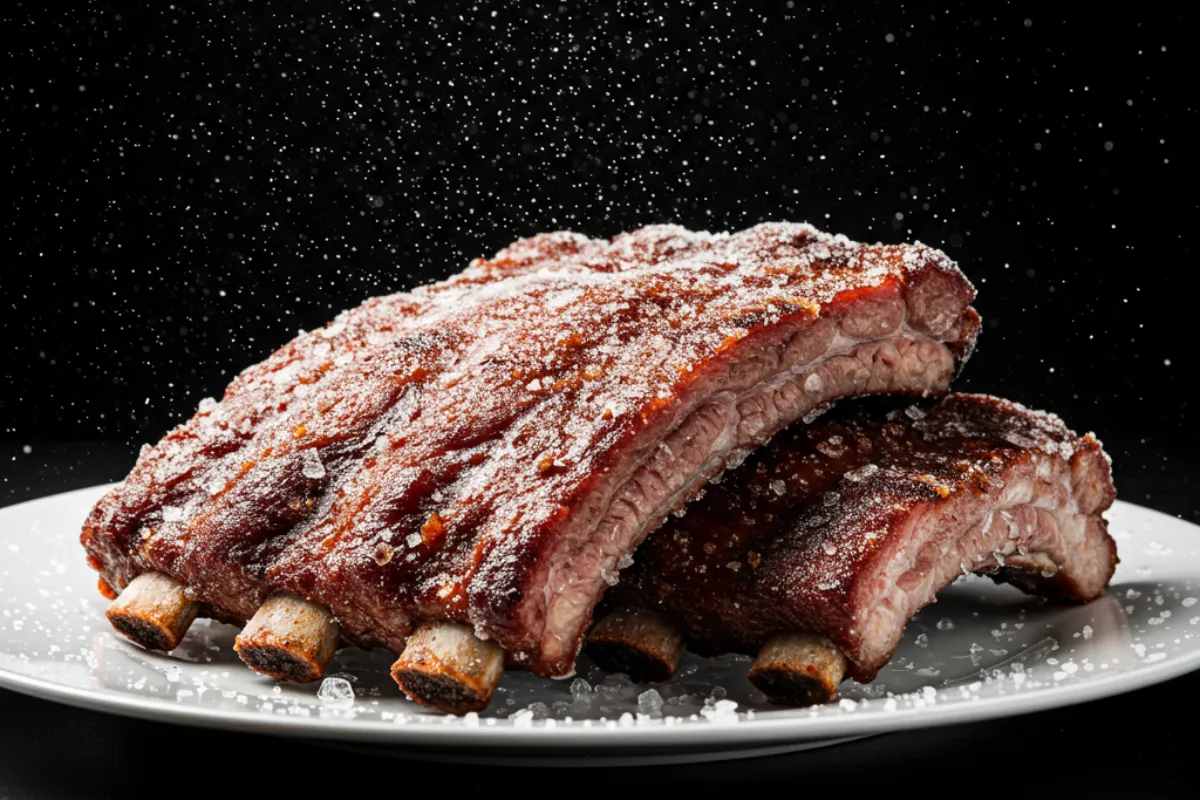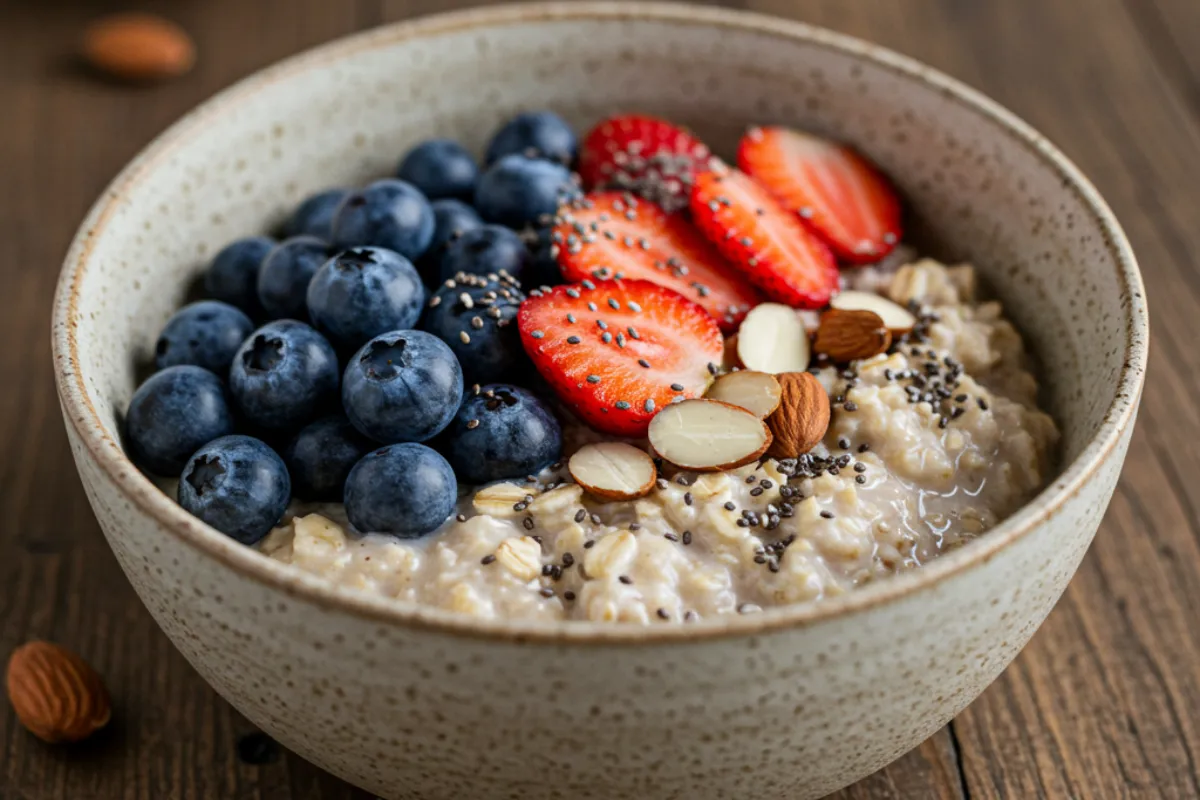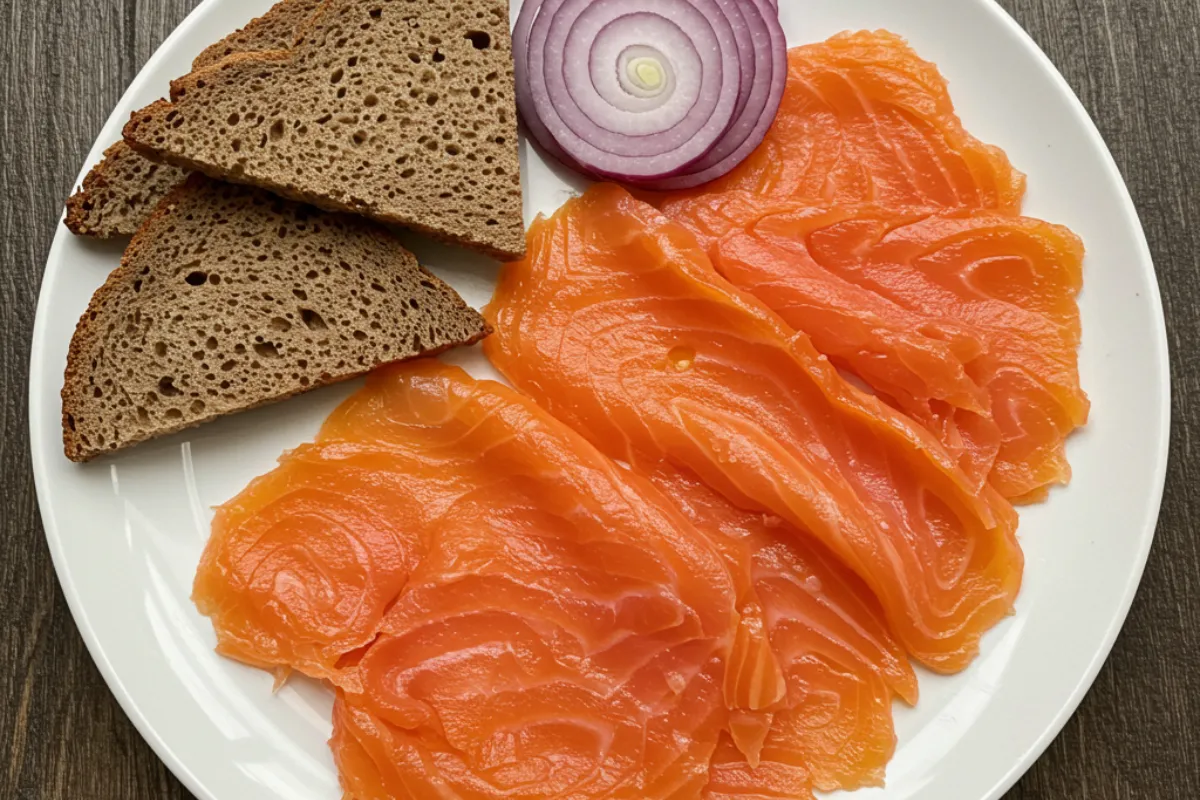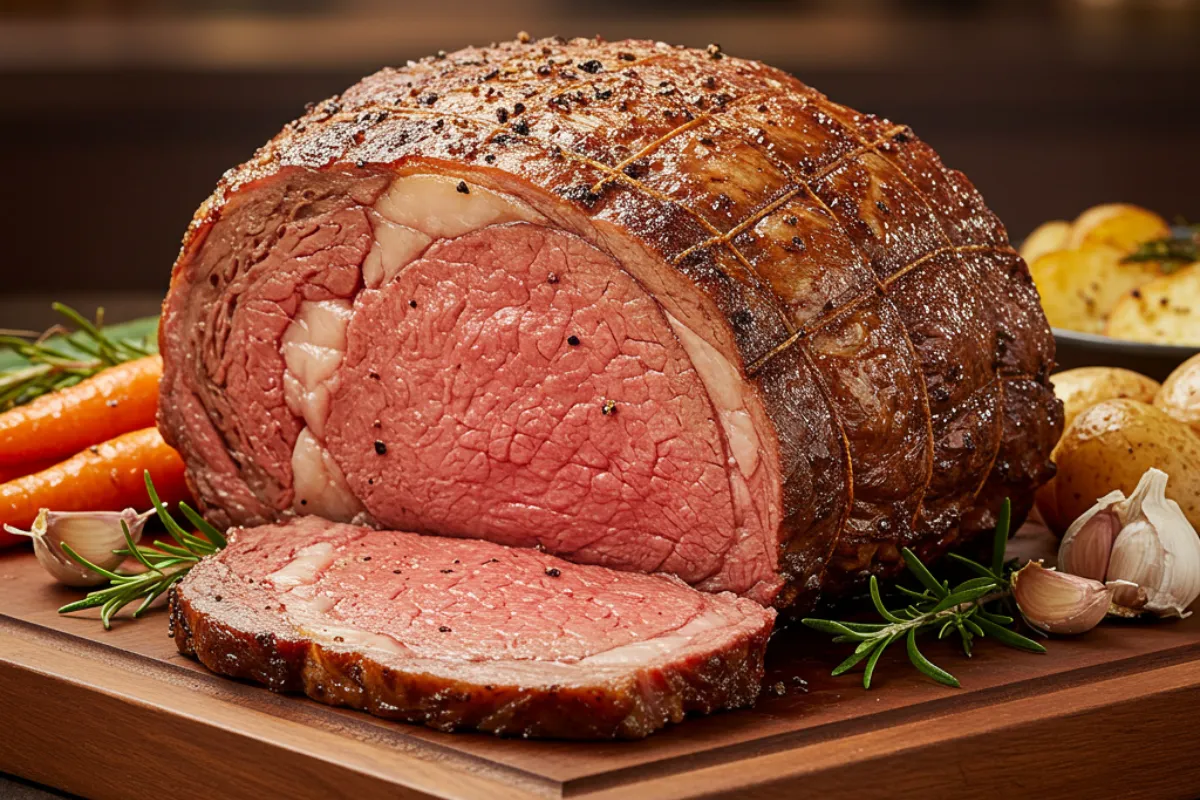Table of Contents
Can you freeze cooked ribs? Cooked ribs, whether pork, beef, or baby back, are a barbecue favourite. They are best served with BBQ sauce. But what happens when you’ve made more ribs than you can eat? The good news is, you can freeze cooked ribs. You can enjoy them later with no loss of flavour or tenderness. You can keep their juicy goodness for months with proper freezing and reheating. This guide will explain how to freeze cooked ribs. It will cover the best methods and tips to keep them delicious.
What Are Cooked Ribs?
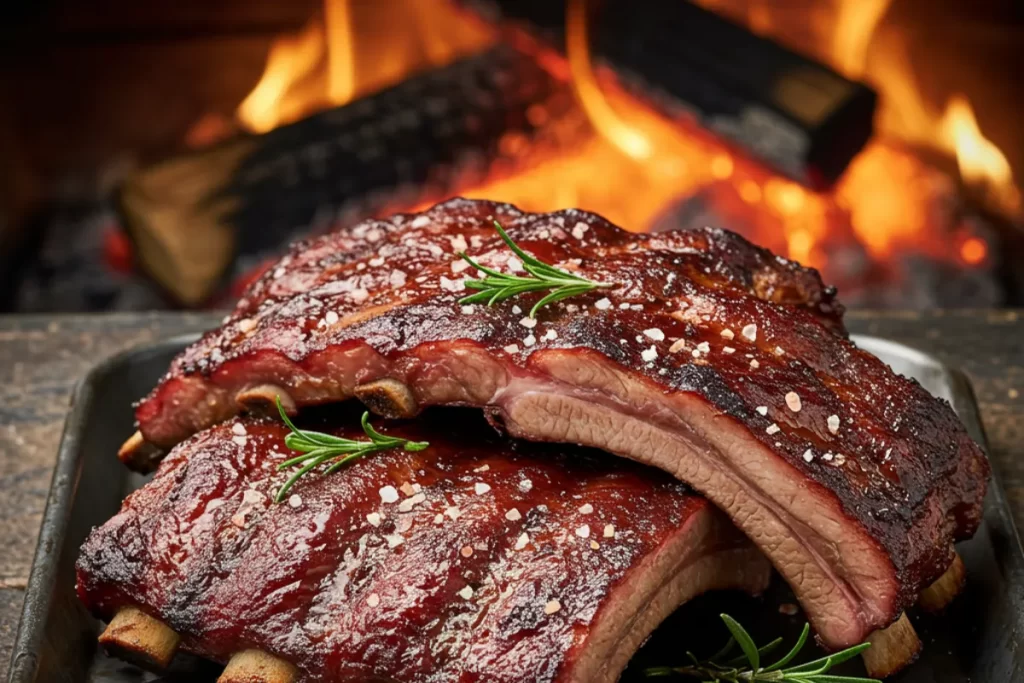
Cooked ribs are tender cuts of meat, usually pork or beef. They are made by smoking, slow cooking, or barbecuing. Popular styles include baby back ribs, spare ribs, and St. Louis-style ribs. They’re often seasoned with dry rubs, basted with sauces, or smoked to perfection. Ribs are a tasty, satisfying meal. Enjoy them fresh off the grill or frozen for later.
Can You Freeze Cooked Ribs?
Can you freeze cooked ribs? Yes, you can freeze cooked ribs! Freezing is an excellent way to extend their shelf life, reduce food waste, and save time on meal prep. Frozen, vacuum-sealed ribs last 12 months. In regular freezer bags, they last 3 months. They will keep their flavour and tenderness.
Why Freeze Cooked Ribs?
- Prevent Food Waste: Save leftovers instead of throwing them away. They can be reheated for a quick meal.
- Convenience: Prepare ribs in bulk and store portions for future meals.
- Flavor Retention: Proper freezing preserves the smoky, juicy taste.
How to Freeze Cooked Ribs
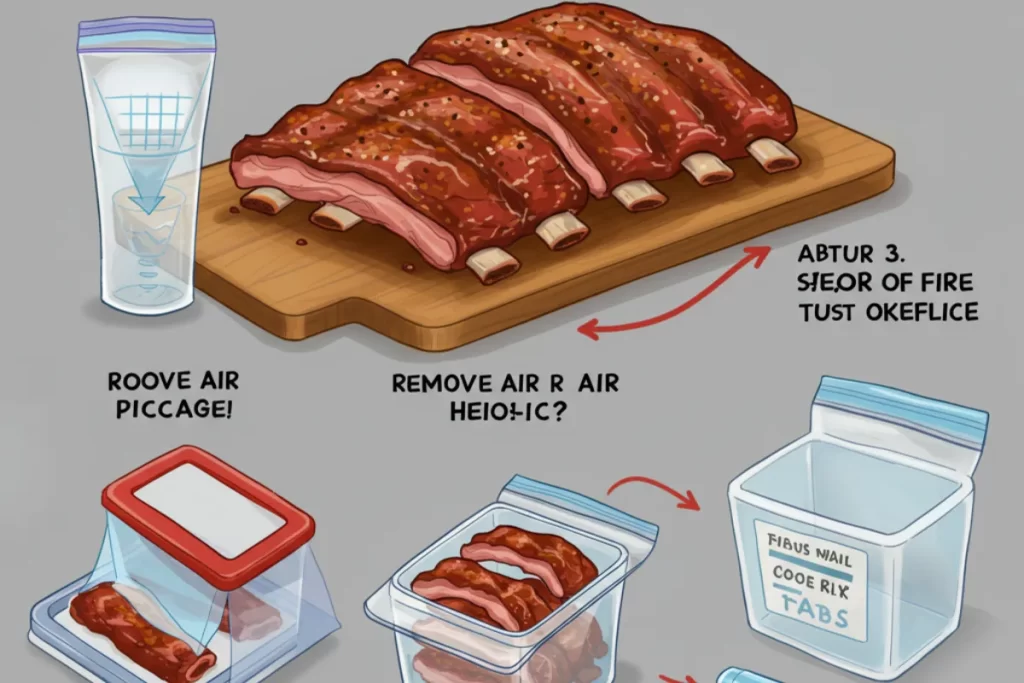
Step 1: Cool the Ribs
- Let the cooked ribs cool completely at room temperature. Store leftovers in the fridge. Do this within 2 hours to prevent bacterial growth.
- Cooling helps retain texture and ensures food safety.
Step 2: Portion the Ribs
- Divide ribs into manageable portions, such as brisket pieces. 2-3 ribs per serving or half racks. This makes thawing and reheating easier.
- Smaller portions also prevent waste and allow you to defrost only what you need.
Step 3: Wrap the Ribs Tightly
- Use heavy-duty aluminium foil or plastic wrap to seal each portion tightly. Ensure there is no air exposure, which causes freezer burn.
- Add a small amount of juice Add sauce to maintain moisture during freezing in a plastic bag.
Step 4: Place in Freezer Bags or Vacuum Seal
- If vacuum sealing, remove as much air as possible to prevent moisture loss.
- For freezer bags, press out the air before sealing.
Step 5: Label and Store
- Label each package with the date and contents. This helps you track freshness.
- Store flat in the freezer for easy stacking and efficient use of space.
Tips for Freezing Cooked Ribs
- Flash-freezing: Lay wrapped ribs flat on a sheet pan. Freeze until solid, then transfer them to bags.
- Use Cooking Juices: Retain some of the cooking liquid to pour over the ribs before freezing. This keeps them moist during reheating.
- Vacuum Sealing: For long-term storage (up to 12 months), vacuum sealing is the best option.
How to Thaw Frozen Ribs
Refrigerator Thawing (Recommended)
- Place frozen ribs in the refrigerator for 24 hours before reheating.
- This slow method ensures even thawing and maintains quality.
Cold Water Thawing
- Submerge sealed ribs in a bowl of cold water.
- Change the water every 30 minutes until thawed. Cook immediately after thawing.
Reheating frozen ribs in the slow cooker is a convenient method
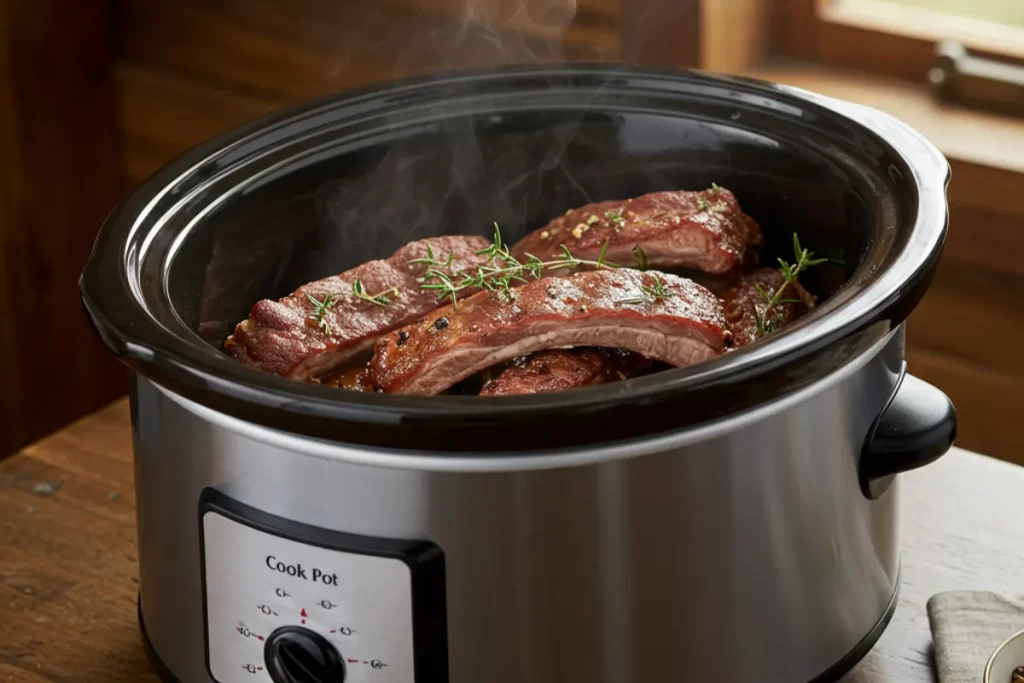
Oven Method
- Preheat oven to 225–275°F (107–135°C).
- Place thawed ribs in a baking dish and add broth, sauce, or cooking juices.
- Cover tightly with aluminium foil.
- Reheat for 20–30 minutes, or until the internal temperature reaches 165°F (74°C).
Hot Water Bath
- If ribs are vacuum-sealed, submerge them in a pot of hot water.
- Let them reheat for 1–1.5 hours.
Grill or Smoker
- Preheat grill or smoker to 275°F (135°C).
- Place ribs on the grate and heat slowly to retain the smoky flavour.
Preventing Freezer Burn
- Double Wrap: Use both foil and a freezer bag for added protection.
- Remove Air: Minimize air exposure by vacuum sealing or pressing out air from freezer bags.
- Quick Freezing: Freeze ribs right after cooling. This prevents ice crystals. For best results, use a vacuum sealer.
Common Challenges and Solutions
Dry Ribs
- Reheat ribs with sauce, broth, or butter to prevent drying.
- Cover ribs tightly during reheating to trap moisture.
Tough Texture
- Avoid high heat during reheating; use slow and low methods.
Freezer Burn
- Use airtight packaging and wrap ribs tightly to protect against air exposure.
Serving Suggestions for Frozen Ribs

Main Dishes
- Serve reheated ribs with classic sides like nachos, which are a great side to complement your BBQ meal. and a refreshing salad from the fridge. coleslaw, mashed potatoes, or cornbread.
Creative Recipes
- Shred ribs for tacos, nachos, or pulled pork sandwiches.
- Cube ribs to add to stews, chilli, or soups for extra flavour.
Party Favorites
- Glaze ribs with barbecue sauce and serve as a crowd-pleasing appetizer.
Also Read: Can You Eat Raw Mushrooms? The Truth Eating Raw Mushrooms
Key Recommendations
- Quick Freezing: Freeze ribs immediately after cooling to maintain freshness.
- Portioning: Divide ribs into servings for convenience.
- Vacuum Sealing: Use vacuum-sealed bags for long-term storage.
- Slow Reheating: Use ovens or grills for the best texture and flavour. You might even preheat your oven for optimal results.
Also Read: Can You Eat Coffee Beans? Health Risks & Benefits
Final Thoughts
Can you freeze cooked ribs? Freezing cooked ribs is a great way to enjoy them later. It won’t harm their flavour or quality. By following these methods and tips, you can preserve your ribs’ smoky, tender taste for months. Frozen ribs are a quick, tasty solution for a busy weeknight or a barbecue craving.

